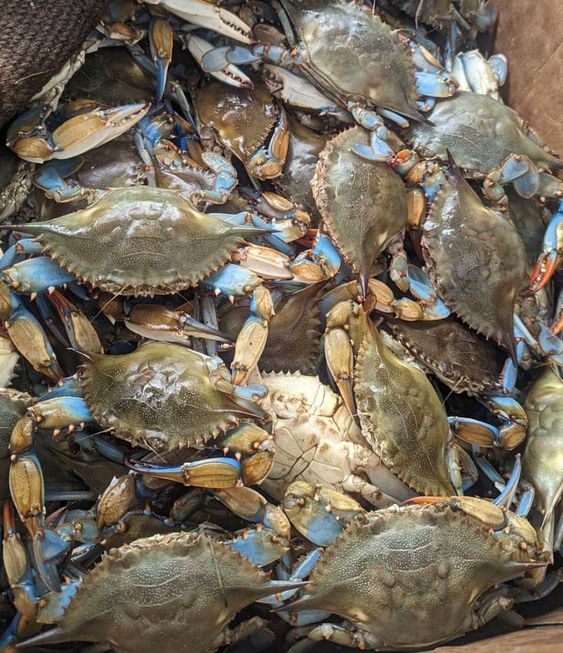The Versatile Black Tilapia fish: Your Guide to Cooking this Sustainable Fish
Black Tilapia fish, also sometimes referred to as Nile tilapia (though not a distinct species), is a popular freshwater fish known for its mild flavor, firm flesh, and versatility in cooking. A member of the cichlid family, it’s native to Africa and the Middle East but has been introduced to waterways around the world due to its fast growth rate and suitability for aquaculture.
This comprehensive guide dives into everything you need to know about black tilapia, from its biological characteristics and habitat to its nutritional value, taste, and popular cooking methods.
Contents
Biological Characteristics
Black tilapia (Oreochromis niloticus) is a medium-sized fish, typically reaching lengths of 12-18 inches and weighing up to 4 pounds. Its body is deep and laterally compressed, with a slightly pointed head and a small mouth. The most distinctive feature, as the name suggests, is its dark coloration. Black tilapia has a predominantly grey or black body with a lighter underside. Juveniles tend to be a more silvery grey.
These Black Tilapia fish are omnivores, feeding on algae, plants, detritus, and small invertebrates. They are social fish and live in groups called schools. They are also known for their parental care, with females incubating fertilized eggs in their mouths until they hatch.
Habitat and Distribution
Black Tilapia fish is native to the freshwater habitats of Africa and the Middle East, particularly the Nile River basin. However, due to its economic importance in aquaculture, it has been widely introduced to other parts of the world, including Asia, North America, and South America.
Black tilapia thrives in warm, shallow freshwater environments such as lakes, ponds, rivers, and even some brackish (slightly salty) waters. They are adaptable fish and can tolerate a range of water quality conditions.
Black Tilapia in Aquaculture
Black Tilapia fish is one of the most commercially important fish species globally. Due to its fast growth rate, ease of breeding, and suitability for pond farming, it has become a major player in aquaculture, the practice of raising fish in controlled environments.
Black Tilapia fish aquaculture provides a sustainable source of protein for human consumption. It’s also a relatively inexpensive fish to produce, making it accessible to consumers worldwide.
However, there have also been some concerns surrounding tilapia aquaculture, such as the potential for escapees to disrupt native ecosystems and the environmental impact of intensive farming practices.
Nutritional Value of Black Tilapia
Black Tilapia fish is a lean source of protein, containing around 2 grams of protein per ounce. It’s also a good source of several essential nutrients, including:
- Vitamin B12: Important for red blood cell formation and nervous system function.
- Selenium: Plays a role in cell function and metabolism.
- Phosphorus: Essential for healthy bones and teeth.
- Potassium: Helps regulate blood pressure and muscle function.
- Niacin: Supports healthy skin and nervous system function.
Black tilapia is generally low in fat and calories, making it a good choice for those following a healthy diet. However, it’s important to note that the fat content can vary depending on the fish’s diet and how it’s prepared.
Taste and Cooking Black Tilapia fish
Black Tilapia fish is known for its mild, slightly sweet flavor with a delicate texture. This makes it a versatile fish that readily absorbs the flavors of seasonings and sauces. It can be prepared in a variety of ways, including:
- Pan-frying: A simple and quick method that results in crispy skin and moist flesh.
- Baking: A healthy option that allows the fish to retain its moisture.
- Grilling: Imparts a smoky flavor to the fish.
- Broiling: Another quick and healthy cooking method.
- Poaching: A gentle cooking method that results in very tender fish.
Here are some additional tips for cooking Black Tilapia fish:
- Use fresh or frozen fillets that are firm to the touch and have no off odors.
- Season the fish generously before cooking.
- Don’t overcook the fish, as it can become dry and tough. It’s done when the flesh flakes easily with a fork.
- Black tilapia pairs well with a variety of flavors, including lemon, herbs, spices, and different sauces.
Due to its mild flavor and versatility, black tilapia is a great choice for those who are new to cooking fish. It’s also a good option for those looking for a healthy and affordable source of protein.






